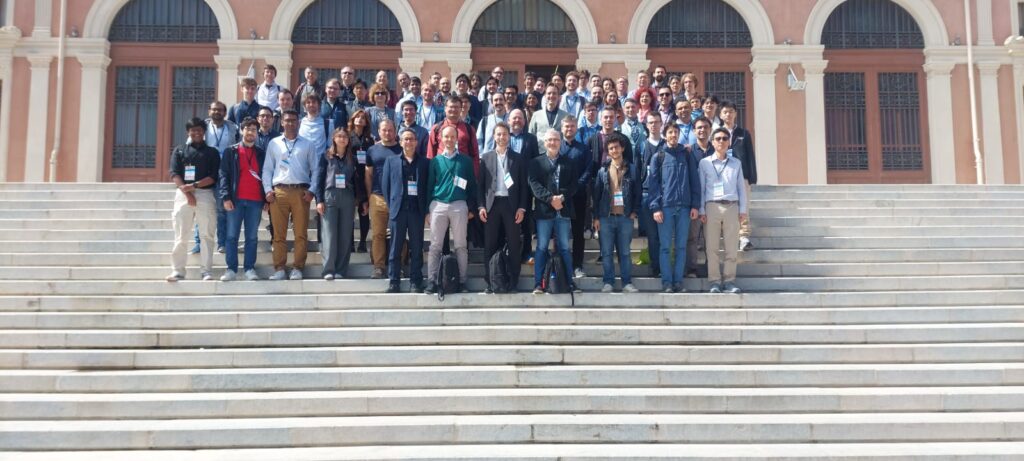Report on California’s Updated Climate Adaptation Strategy
Introduction: Aligning State Action with Global Climate Goals
The State of California has released its updated Climate Adaptation Strategy, a comprehensive framework designed to enhance the resilience of its communities, economy, and natural ecosystems against the impacts of climate change. This initiative directly supports the United Nations’ Sustainable Development Goal 13 (Climate Action) by outlining a strategic approach to mitigate risks from extreme heat, wildfires, drought, and rising sea levels. The strategy emphasizes the protection of vulnerable populations, reflecting a commitment to SDG 10 (Reduced Inequalities).
Progress Since 2021 and SDG Contributions
Since the last update in 2021, California has made significant investments in climate resilience. A 2022-2024 progress review indicates that 92 percent of all metrics from the 2021 strategy are either completed or well underway. These efforts have yielded tangible outcomes that align with multiple Sustainable Development Goals.
Key Achievements and SDG Alignment
- Ecosystem Restoration and Flood Resilience: The completion of the largest single tidal wetland restoration project in the Delta enhances natural flood defenses, contributing to SDG 15 (Life on Land), SDG 6 (Clean Water and Sanitation), and SDG 11 (Sustainable Cities and Communities).
- Wildfire Mitigation: The establishment of a fuel break network in Butte County proved effective in protecting communities and natural systems from a major wildfire, advancing SDG 11 and SDG 15.
- Water Security Infrastructure: Implementation of the Delta Conveyance Project aims to secure water delivery amidst extreme climate conditions, supporting SDG 6 (Clean Water and Sanitation) and SDG 9 (Industry, Innovation and Infrastructure).
- Coastal Infrastructure Adaptation: The realignment of a major highway in Sonoma County away from eroding bluffs is a direct response to sea-level rise, bolstering resilient infrastructure in line with SDG 9 and SDG 11.
- Public Health Protection: The development of CalHeatScore, a tool to forecast heat severity and connect residents with resources, directly addresses public health challenges and supports SDG 3 (Good Health and Well-being).
Updated Strategic Priorities for Climate Resilience
The updated strategy is structured around six core priorities, each designed to build a climate-safe future and contribute to specific Sustainable Development Goals.
Core Priorities and SDG Contributions
- Protecting Vulnerable Communities: This priority focuses on safeguarding populations most at risk from climate impacts, directly aligning with SDG 10 (Reduced Inequalities) and SDG 1 (No Poverty).
- Improving Public Health and Safety: Actions under this priority aim to protect Californians from increasing climate risks, contributing to SDG 3 (Good Health and Well-being).
- Building a Climate-Resilient Economy: This objective seeks to ensure economic stability and growth in the face of climate change, supporting SDG 8 (Decent Work and Economic Growth).
- Expanding Nature-Based Solutions: By strengthening natural systems, this priority advances SDG 15 (Life on Land) and SDG 14 (Life Below Water).
- Making Decisions Based on Best Available Science: This commitment to evidence-based policy supports SDG 9 (Industry, Innovation and Infrastructure) by fostering innovation.
- Partnering and Collaborating to Leverage Resources: This priority emphasizes multi-stakeholder engagement, reflecting the principles of SDG 17 (Partnerships for the Goals).
Key Modifications in the Updated Strategy
The 2024 update incorporates several key enhancements to improve effectiveness and accountability. These modifications reflect a commitment to integrated planning and inclusive governance.
Strategy Enhancements
- Integration of New Initiatives: The strategy now includes actions from recent plans such as the 2021 Extreme Heat Action Plan and California’s Water Supply Strategy, ensuring a cohesive statewide approach.
- Refined Metrics and Actions: Success metrics and actions have been updated to improve clarity, reduce redundancy, and enhance consistency for more effective implementation reporting.
- Incorporation of Public and Tribal Input: The strategy integrates extensive feedback from over 500 Californians gathered through various engagement channels, demonstrating a commitment to inclusive institutions as outlined in SDG 16 (Peace, Justice and Strong Institutions) and SDG 17 (Partnerships for the Goals).
- Inter-Agency Collaboration: The update is a product of collaboration among 17 state agencies, embodying the partnership-driven approach of SDG 17.
Analysis of California’s Climate Adaptation Strategy and its Connection to SDGs
1. Which SDGs are addressed or connected to the issues highlighted in the article?
The article on California’s Climate Adaptation Strategy addresses several Sustainable Development Goals (SDGs) by focusing on integrated approaches to climate resilience, public health, infrastructure, and environmental protection.
- SDG 3: Good Health and Well-being: The strategy’s focus on “improving public health and safety to protect against increasing climate risk” directly connects to this goal. The article highlights the development of “CalHeatScore,” a tool to forecast heat severity risks to health, which aims to protect citizens, especially vulnerable groups, from climate-related health threats.
- SDG 6: Clean Water and Sanitation: The article discusses challenges like drought and flooding. It mentions the “Delta Conveyance Project” as a strategy to “ensure Californians continued water delivery in hotter, drier, and more extreme conditions” and highlights the “largest single tidal wetland restoration project in the Delta,” which relates to managing and restoring water-related ecosystems.
- SDG 9: Industry, Innovation, and Infrastructure: This goal is addressed through the state’s efforts to build resilient infrastructure. The article provides a specific example of “the first Caltrans project specifically designed to address sea level rise, realigning a major highway away in Sonoma County from eroding coastal bluffs.”
- SDG 11: Sustainable Cities and Communities: The strategy’s core mission is to make communities more resilient and safe. It aims to “protect communities most vulnerable to climate change” and protect them from disasters like wildfires and floods. The mention of fuel breaks in Butte County that “saved lives, protected property” is a direct example of making human settlements safer and more resilient.
- SDG 13: Climate Action: This is the central SDG addressed. The entire article is about “California’s updated Climate Adaptation Strategy,” which is an overarching framework to combat climate change impacts. It details actions to address extreme heat, firestorms, drought, flooding, and rising seas, which are all part of taking urgent action to combat climate change and its impacts.
- SDG 15: Life on Land: The strategy includes “expanding nature-based climate solutions and strengthening the resilience of natural systems.” The article mentions the restoration of a tidal wetland and the creation of fuel breaks that “bolstered the resilience of natural systems” as concrete actions toward protecting and restoring terrestrial ecosystems.
- SDG 17: Partnerships for the Goals: The strategy emphasizes collaboration. One of its six priorities is “Partnering and collaborating to leverage resources.” The article notes that “17 state agencies and many departments contributed to the updated Strategy” and that it integrated “extensive public input… from over 500 Californians,” demonstrating a multi-stakeholder approach.
2. What specific targets under those SDGs can be identified based on the article’s content?
The article’s content points to several specific SDG targets:
-
Target 13.1: Strengthen resilience and adaptive capacity to climate-related hazards and natural disasters in all countries.
- The entire “Climate Adaptation Strategy” is designed to achieve this target by creating a framework to protect communities from “extreme heat, firestorms, drought, flooding, and rising seas.”
-
Target 11.5: Significantly reduce the number of deaths and the number of people affected… by disasters… with a focus on protecting the poor and people in vulnerable situations.
- The strategy explicitly prioritizes “Protecting communities most vulnerable to climate change” and mentions that “seniors, outdoor workers, and low-income families, are being hit hardest.” The fuel breaks that “saved lives” directly contribute to this target.
-
Target 9.1: Develop quality, reliable, sustainable and resilient infrastructure… to support economic development and human well-being.
- The Caltrans project to realign a major highway to protect it from sea-level rise is a clear example of adapting infrastructure to be more resilient to climate impacts.
-
Target 6.6: By 2020, protect and restore water-related ecosystems, including mountains, forests, wetlands, rivers, aquifers and lakes.
- The article’s mention of the “largest single tidal wetland restoration project in the Delta to date” is a direct action towards fulfilling this target.
-
Target 3.d: Strengthen the capacity of all countries… for early warning, risk reduction and management of national and global health risks.
- The development of “CalHeatScore, a cutting-edge tool to forecast and rank heat severity risks to health” serves as an early warning and risk reduction system for the health impacts of extreme heat events.
-
Target 17.17: Encourage and promote effective public, public-private and civil society partnerships, building on the experience and resourcing strategies of partnerships.
- The article highlights that the strategy was developed with contributions from “17 state agencies and many departments” and incorporated feedback from “over 500 Californians gathered through workshops, community meetings, online sessions, and tribal roundtables,” reflecting a multi-stakeholder partnership approach.
3. Are there any indicators mentioned or implied in the article that can be used to measure progress towards the identified targets?
Yes, the article explicitly mentions a system for measuring progress and provides examples that can serve as indicators.
- Formal Metrics System: The article states, “California measures progress toward these priorities through time-bound success metrics. These metrics, introduced in the 2021 Strategy, are tracked over time and reported on annually.” This is a direct reference to a formal indicator framework.
- Quantitative Progress Reporting: A specific indicator of progress is cited: “A review of progress reported between 2022 and 2024 found that 92 percent of all 2021 metrics are well underway, nearing completion, or completed, and that two-thirds of metrics scheduled to end between 2021 and 2024 have been completed.”
-
Project Completion as an Indicator: The article lists several completed or ongoing projects whose status serves as a tangible indicator of progress. These include:
- The completion of the tidal wetland restoration project in the Delta.
- The successful use of a network of fuel breaks in Butte County to protect communities.
- The implementation status of the Delta Conveyance Project.
- The completion of the Caltrans highway realignment project in Sonoma County.
- The development and deployment of the CalHeatScore tool.
- Policy and Plan Implementation: The release of the “updated Climate Adaptation Strategy” itself, along with the integration of actions from the “2021 Extreme Heat Action Plan” and “California’s Water Supply Strategy,” serves as an indicator of policy integration and implementation.
4. Table of SDGs, Targets, and Indicators
| SDGs | Targets | Indicators |
|---|---|---|
| SDG 13: Climate Action | 13.1: Strengthen resilience and adaptive capacity to climate-related hazards and natural disasters. | Implementation of the state’s Climate Adaptation Strategy; Annual reports on “time-bound success metrics.” |
| SDG 11: Sustainable Cities and Communities | 11.5: Significantly reduce deaths and people affected by disasters, focusing on vulnerable populations. | Number of lives and properties saved by the network of fuel breaks; Actions taken to protect seniors, outdoor workers, and low-income families. |
| SDG 9: Industry, Innovation, and Infrastructure | 9.1: Develop quality, reliable, sustainable and resilient infrastructure. | Completion of the Caltrans project to realign a major highway to address sea-level rise. |
| SDG 6: Clean Water and Sanitation | 6.6: Protect and restore water-related ecosystems. | Completion of the tidal wetland restoration project in the Delta. |
| SDG 3: Good Health and Well-being | 3.d: Strengthen capacity for early warning, risk reduction and management of health risks. | Development and deployment of the CalHeatScore tool to forecast and rank heat severity risks to health. |
| SDG 15: Life on Land | 15.1: Ensure the conservation, restoration and sustainable use of terrestrial and inland freshwater ecosystems. | Expansion of nature-based solutions; Bolstered resilience of natural systems through fuel breaks. |
| SDG 17: Partnerships for the Goals | 17.17: Encourage and promote effective public, public-private and civil society partnerships. | Collaboration of 17 state agencies on the strategy; Integration of feedback from over 500 Californians. |
Source: mavensnotebook.com







